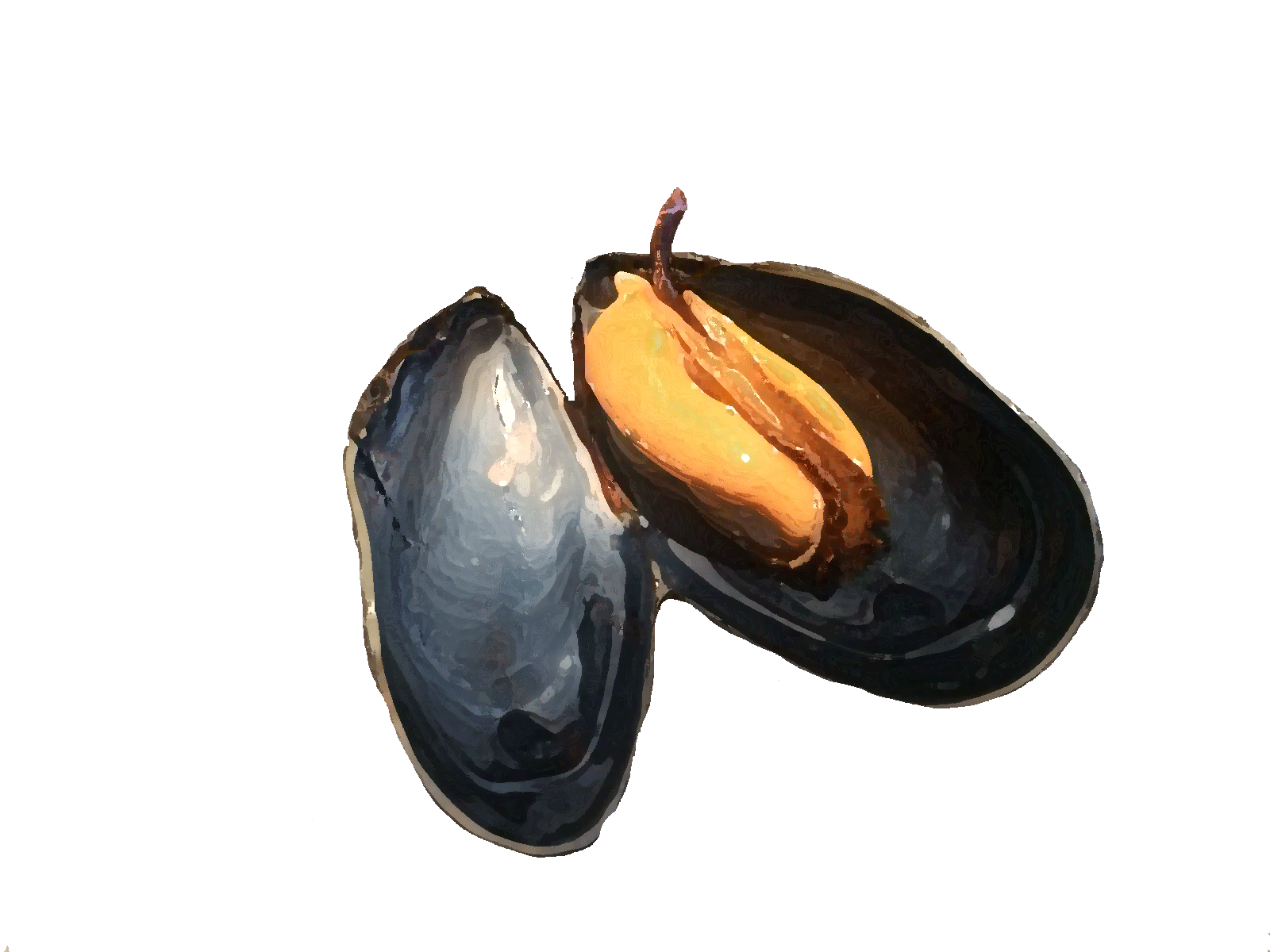In natural mussel beds, distinct spatial patterns can be observed from the air. Particularly in young mussel beds, bands with high mussel densities and uncovered bare sediment strips alternate. Biologists previously showed that these patterns are a form of mussels’ self-organization. In fact, the bands result from an interaction in which mussels like to clump together to form dense mates and competition among mussels for food. Mussels like to sit close together because it provides protection from predators and washout by wave action and currents (van Duren et al. 2006, Donker et al. 2013, Donker 2015). But that close proximity also makes for high food competition. If the mussels formed 1 large mat then the mussels in the middle would have no food because this is where algae are filtered out. Mathematical models show that through the interaction between competition for food on the one hand, and protection through clumping on the other, the mussels naturally form bands.
Large-scale links
Mussels within bands have a higher chance of survival than those between bands at much lower densities. In addition, the vertical structure created by the formation of spatial patterns allows for more turbulence and vertical opinion of water and thus higher food availability. Mussels on a mussel bed pump large amounts of water through their gills. Food in the form of plant plankton is filtered out and eaten, but much of it is discarded and deposited as pseudofaeces among the mussels. The accumulation of pseudofaeces and silt beneath the mussels creates a rolling landscape where bands of mussels rise above the surrounding landscape. This rolling landscape and the roughness of the mussels creates spatial differences in flow velocity and increases turbulence across a mussel bed. Turbulence is important for mixing food in the water column. Mussels feed on algae from the water layer close to the bottom; the food in this water layer is quickly depleted. The increased turbulence causes rapid renewal of food in the soil layer. Wide mussel bands transverse to the direction of flow or wave ensure that there is increase in mixing and no flow is directed around the mussel patches. Thus, breaking up this type of band pattern during storms can have consequences for the growth and long-term survival of a mussel bed.
Small grid pattern
Within the bands, the mussels again form net-like structures, consisting of strands of mussels tangled together. These small-scale patterns arise as mussels actively clump together, forming strands, which in turn form a network-like structure with each other. This pattern formation is a very different process, which is driven by the movement of the mussels, rather than local differences in growth and mortality.


